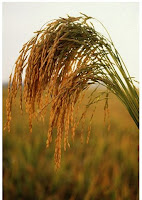The earth worm is called “friend of the farmer.” This is because it helps much to increase the fertility of the soil. A highly delightful book on the earth worms is written by Charles Darwin the modern architect of the evolution theory - “The Formation of vegetable mould through the action of worms.”
Image Source: www.wikipedia.com
The chief food of earthworms is decaying plant matter. They also occasionally eat dead animals. they take in these materials along with some soil while swallowing.
The chief food of earthworms is decaying plant matter. they also occasionally eat dead animals. They take in these materials along with some soil while swallowing.
Scientists have estimated the earthworms to the acre as high as 3 million or 15 cwt. As Gilbert White wrote.” without them (the soil) would become cold, hardbound, and void of fermentation and consequently sterile.”
Darwin estimated that 7 1/2 to 18 tons of soil can be thrown up per acre per year! He compared them to that of the plough and said-“long before the plough existed the land was in fact regularly ploughed and still continue to be thus ploughed by earthworms”!
The Upper side of the mouth is covered by a lip (prostomium) which is used for seizing decaying leaves. It is passed on to the muscular pharynx and on to the Oesophagus, from where it goes to the muscular walled gizzard where it is made into a pulpy mass, which is passed into the intestine. The digestion ends there.






